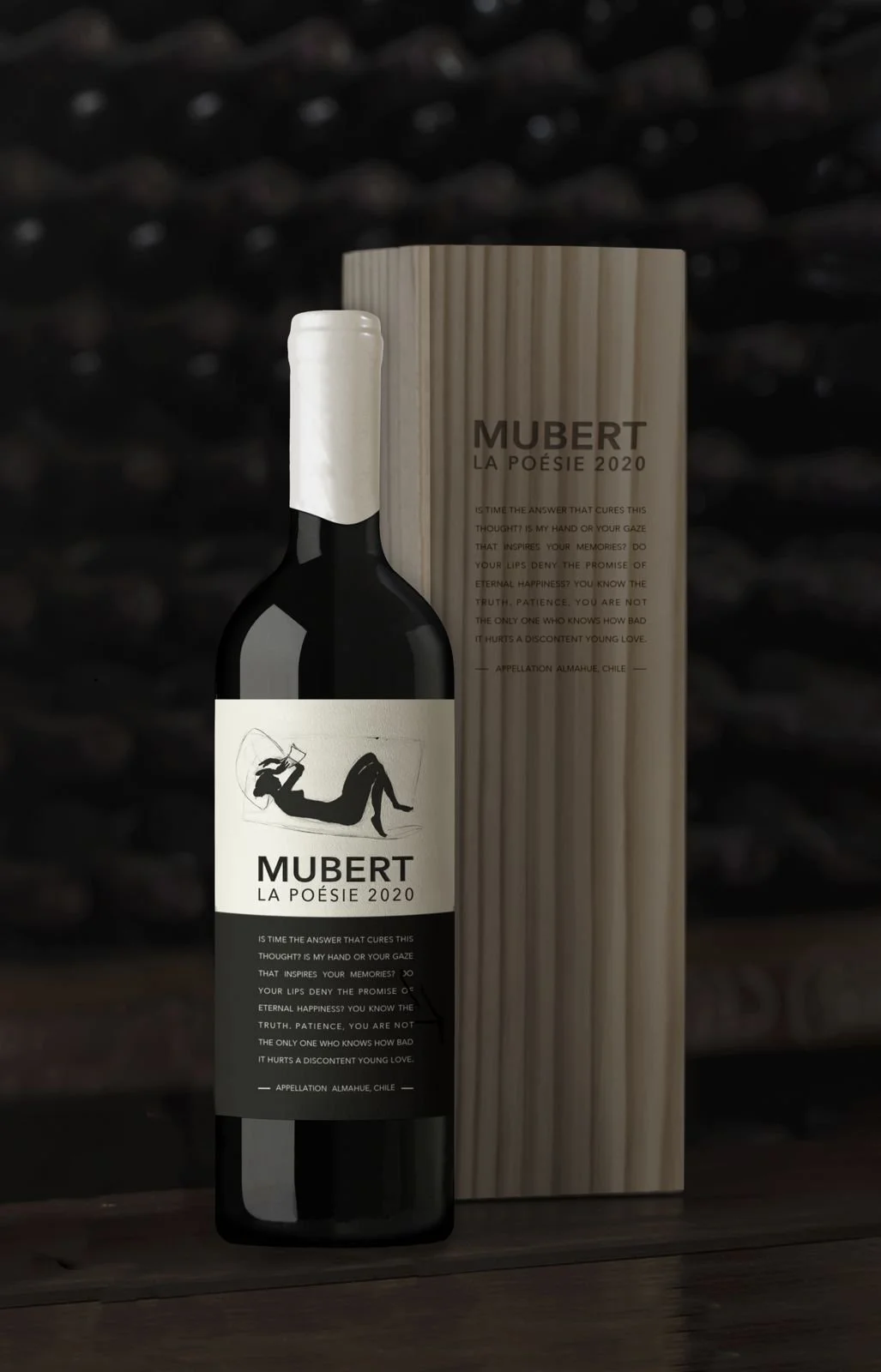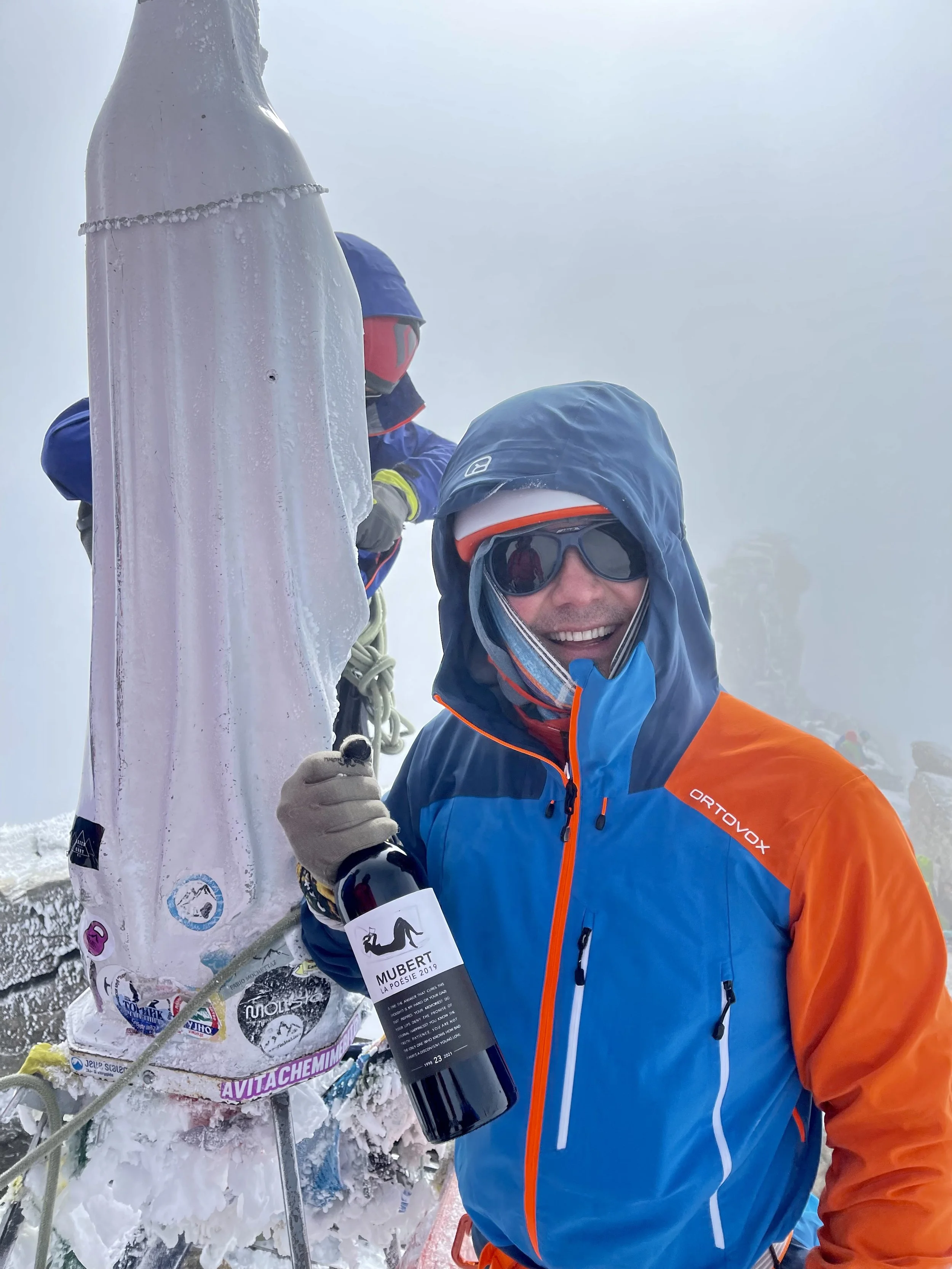“SON, FAMILY IS THE MOST IMPORTANT THING IN LIFE AND WINE BRINGS US TOGETHER.” - JOSÉ URRA
As a kid, I watched my grandfather, José Urra, make wine with passion and joy. Looking back, I realize I was too young to truly grasp the wisdom in his words. Later, my father took me under his wing, teaching me how to cultivate a vineyard and revealing the secrets of the wine trade.
WHAT IS WINE, ANYWAY?
Wine has been intertwined with human civilization for thousands of years, shaping our history as we know it in the West. Throughout time, wine has been seen as medicine, a social lubricant, a staple of cuisine, a symbol of culture and status, a soul-elevating substance, a prized commodity, and, for some religions, a central element of faith.
The world's oldest known winery, found in the Areni-1 cave near Yerevan, Armenia, dates back about 6,100 years. However, the story of wine stretches even further—8,000 years ago, when early humans first domesticated the wild Eurasian grapevine to produce wine. According to the Proceedings of the National Academy of Sciences (PNAS), ancient jars found in Southern Georgia contained DNA residues of wine, marking one of the earliest known uses of grapes for winemaking.
If you’re eager to dive deep into the origins of wine, I highly recommend Ancient Wine: The Search for the Origins of Viniculture by Patrick E. McGovern. Be warned—it’s a dense, scientific read. If you’re just starting out, I suggest picking up Great Wine Tours of the World by Jim Budd. It’s an easy, enjoyable read with stunning pictures and maps that will take you through the terroirs of iconic wines. Though it was published 20 years ago and some information may be dated, it’s still a fantastic introduction to the world of wine.

“THE TWO MOST IMPORTANT DAYS IN YOUR LIFE ARE THE DAY YOU ARE BORN AND THE DAY YOU FIND OUT WHY.” - MARK TWAIN
For over 25 years, I traveled the world exporting wines for various wineries, from ultra-premium brands to supermarket labels. Now, I make my own wine, MUBERT LA POÉSIE, as a way to pass on our cultural heritage to my son and inspire people to date with intention and raise a family.
“My friend let's not think of tomorrow, but instead enjoy this fleeting moment of life. Raise a glass of wine, sit by the light of the moon and drink thinking that perhaps tomorrow the moon will look for you in vain.” - Omar Khayamm.
This engraving painting is titled FEMME ENDORMIE AVEC BOUQUIN 1 (Sleeping Woman with Book 1) by Alfredo Echazarreta.
The first time I encountered Alfredo’s paintings was in 2011, and I was immediately captivated by their beauty and felt an instant connection. A decade later, I finally had the chance to meet him in person.
Alfredo is not only an exceptional artist but also an avid world traveler, having lived in cities like Florence, London, Amsterdam, New York, and Paris. Today, he resides in Santiago, Chile, where he continues to explore his passions for wine and poetry.
One day, I gave Alfredo my book, Sensitive Thirst for Words, and shared with him how his painting, FEMME ENDORMIE AVEC BOUQUIN 1, reminded me of Éléonor—a beautiful young woman I met in Bordeaux in 1998. In my book, there’s a poem titled Patience (which is also the name of one of the chapters), where I recount my life in France and how Éléonor became my muse. Moved by our conversation, Alfredo graciously allowed me to feature his painting on the label of my wine.
In modern English, Bouquin translates simply to “book,” but in French, it carries a richer meaning, referring to an “old book, pocket book, or notebook.” Like other Latin-based languages, French distinguishes between formal and colloquial expressions; Livre is the formal term for “book,” while Bouquin is the more familiar one. In my interpretation, the painting’s title could be translated as “Sleeping Woman with Old Book,” but to expand on it, I see the old book as a “poem that transcends time.”
LABEL ART WORK.
Terroir wines are like poetry; they elevate the senses and enrich the soul. They are the result of countless details, from subsoil type, climate, vineyard management, and location, to the winery’s technology, cooper/cork selection, and, of course, the art of blending. But above all, they reflect the producer’s passion, life experience, and winemaking philosophy.
With that same attention to detail, here are the inspirations behind my label artwork:
LA POÉSIE means POETRY. I chose French instead of English or Spanish as a tribute to Éléonor, my muse, and because it was in France where I first learned about terroir and the art of blending.
The upper color (Ivory) represents Éléonor’s pearl necklace and earrings, while the black bottom symbolizes the elegant, long dress she wore the night we attended the ballet together.
The verse on the label is an extract from my poem Patience.
The color scheme and fonts draw inspiration from Tom Ford’s style—minimalistic, seductive, simple, yet striking. It’s a timeless, elegant design that captures the essence of the wine within.
There are more stories behind the design of MUBERT LA POÉSIE’s label and grape variety selection, but I’d rather share those over a wine dinner or tasting. I hope we can meet someday to raise a glass together—to love and family.
(Photo taken by my friend Jack Sharkey at the summit of Gran Paradiso, Italy; year 2022.)
This seductive estate-grown Cabernet Sauvignon comes from the appellation Almahue, Colchagua, Chile. It embodies extraordinary elegance, drawing inspiration from the iconic wines of Bordeaux's Left Bank.
In homage to the Bordeaux Classification in 1855, this wine may include a percentage of Carménère, depending on the vintage, further enhancing its character and complexity.
Intense ruby in color. Sophisticated aromas of ripe red berries, black pepper, graphite, mint, and a subtle note of cassis evoke elegance. A serious class Cabernet Sauvignon, both deep and balanced, showcasing a vibrant structure built on acidity. Its full-bodied profile is complemented by fine, silky tannins that culminate in a lingering, endless finish—a true testament that elevate the senses.
MUBERT LA POÉSIE.
(Photo taken inside a concrete tank during the production of Chianti Classico wines. Year 2000, Greve in Chianti, Tuscany, Italy.)
MUBERT LA POÉSIE is a celebration of love and a tribute to the original Bordeaux wines of 1855, which included Carménère. Most importantly, it’s made with a deeper purpose: to inspire people to date with intention and raise a family.
In 2021, while editing the Patience chapter of my first novel’s English edition, I sat with a glass of wine and a shoebox of old photos. That’s when I found a picture of Éléonor, the beautiful young woman with whom I once attended the ballet in Bordeaux (1998). Her memory, combined with my experiences in France and Italy as a winegrower and the love of my son, sparked the creation of this special wine.
The debut vintage of MUBERT LA POÉSIE is a limited edition of 1,998 bottles, representing the year I lived in Bordeaux. I plan to gradually increase production to a maximum of 2,021 cases (9 liters each), a symbolic nod to an important year in my life.
Once sales reach this production cap, I’ll introduce a new wine to my portfolio. I’m still deciding, but I’m considering one of the following appellations: Napa or Paso Robles (USA), Bordeaux or Châteauneuf-du-Pape (France), Alentejo (Portugal), Salta or Valle de Uco (Argentina), or Bolgheri, Salina, or Greve in Chianti (Italy).


